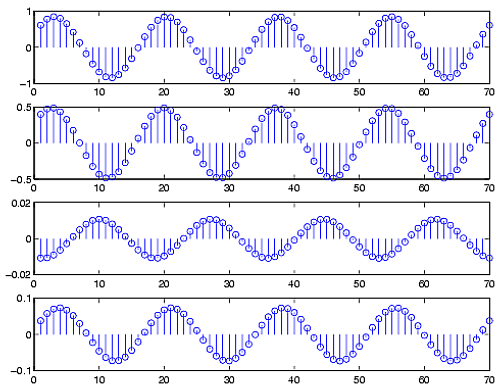Finding the average value of a set of random signals or random
variables is probably the most fundamental concepts we use in
evaluating random processes through any sort of statistical
method. The mean of a random process is the average
of all realizations of that process. In order to
find this average, we must look at a random signal over a
range of time (possible values) and determine our average from
this set of values. The mean, or average, of a
random process,
x(t)
,
is given by the following equation:
()
This equation may seem quite cluttered at first glance, but we
want to introduce you to the various notations used to
represent the mean of a random signal or process. Throughout
texts and other readings, remember that these will all equal
the same thing. The symbol,
μx(t)
, and the X with a bar
over it are often used as a short-hand to represent an
average, so you might see it in certain textbooks. The other
important notation used is,
E[X]
, which represents the "expected value of
X" or the mathematical
expectation. This notation is very common and will appear
again.
If the random variables, which make up our random process, are
discrete or quantized values, such as in a binary process,
then the integrals become summations over all the possible
values of the random variable. In this case, our expected
value becomes
()
If we have two random signals or variables, their averages can
reveal how the two signals interact. If the product of the two individual
averages of both signals do not equal the
average of the product of the two signals, then the two
signals are said to be linearly independent, also
referred to as uncorrelated.
In the case where we have a random process in which only one
sample can be viewed at a time, then we will often not have
all the information available to calculate the mean using the
density function as shown above. In this case we must
estimate the mean through the time-av












